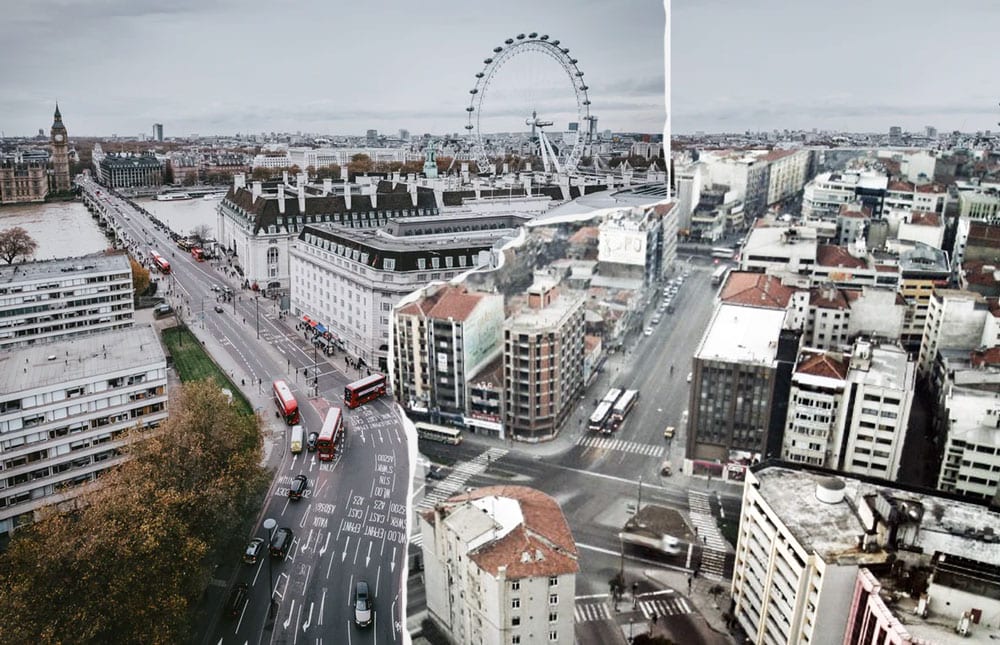City level policies for the transition to a Circular Economy: learning from London and İzmir
Becoming a circular city is a declared future-vision for London. The London Waste and Recycling Board have launched a programme to facilitate the transition. As part of her PhD research about the role of urban policies in enabling circular transitions, CUSP visiting researcher Zeynep Özçam took a closer look.

The human effect on nature has reached alarming levels. It is widely understood that the health of the world’s ecosystems is threatened by human-related processes such as high levels of energy use, resource exploitation and waste generation. Overconsumption and linear production patterns in urban areas based on take-make-dispose are primary contributors to those problems.
The Circular Economy (CE), represents a promising solution. CE proposes an alternative economy that challenges the inefficient management of resources in the traditional linear model. In it’s most comprehensive shape, the circular economy, as an alternative to growth-based approaches, is reclaiming prosperity by redefining success through business model and social innovations, and by focusing on positive society-wide benefits, reducing pressure on the environment, reducing greenhouse gas emissions, and improving environmental conditions by preventing waste and pollution, boosting social and economic welfare.
The concept of Circular Economy is the most recent attempt to integrate the economy and environment in a way that is coherent with wider ‘sustainable development’ objectives.
As urban areas have become major sites for environmental policy-making, city-level institutions started to take take action to make their cities more circular; and London has come to the forefront with its ambitious public efforts to become a circular city.
While based at Middlesex University as a visiting researcher with CUSP in early 2019, I analysed the governance of transition in London, paying particular attention to how planning can enable progress in city-level transition towards circularity. The work forms part of a comparative study with İzmir in Turkey.
Circular London
Becoming a circular city is a future-vision for the city of London, which makes CE the key development strategy and an ambitious target to achieve for the capital. The vision for London is defined as “a circular city which capitalises on the opportunities to become a more resilient, resource-efficient and competitive city of the future”. (www.lwarb.gov.uk)
To make London more circular, the London Waste and Recycling Board (LWARB) has produced a ‘Circular Economy Route Map‘, putting an emphasis on innovation and collaboration. The LWARB, chaired by the Mayor of London, works in conjunction with local authorities to improve waste and resource management in the capital. The Board’s very existence as the coordinating city-level institution for CE makes the city-level transition a very promising outlook. It acts as a hub for circular economy good practice, network and learning.
The route map is built on a CE frame based on the concept of creating value for all. In that sense, it emphasises the social, environmental, economic benefits of a CE transition, especially on specific sectors such as electronics, plastics, food, textiles and built environment. Accordingly, the route map has determined key actions for a transition in these specific sectors, including increasing finance mechanisms especially for SMEs and start-ups with new business models, supporting businesses based on re-use, remanufacturing, materials innovation, increasing collaboration with city-level institutions and using public procurement as a tool and becoming an innovation and knowledge hub for circular economy projects in these sectors.
Circular economy strategies have also been supported by other city-level institutions: The Greater London Authority (GLA) has recently published two strategy papers supporting the CE agenda, including the London Environment Strategy report and London Waste Strategy 2020 report—both addressing key actions for circular economy implementation.
The CE has also been adopted in other London planning schemes defining specific action areas for the transition to a circular economy, increasing the outlook and effectiveness of the interventions at city-level. These planning documents are the City of London Draft Local Plan 2036 (Strategic Policy 16) and The Draft of New London Plan (Policy GG6) with specific chapters and key strategies. At city-level, policies and planning schemes; recycling and waste related targets are important for the city of London.
Main inferences from the case of London
In addition to developing planning tools, the LWARB—as the main body facilitating the city’s circular transition—works on investment opportunities and funding mechanisms. The Board has an emphasis on business support schemes to increase collaboration, not only between public and private stakeholders but also between business stakeholders. Moreover, LWARB tries to increase its role as a hub to facilitate knowledge exchange on experiences and successful practices. While still early days, waste elimination and resource efficiency is high on the agenda—through encouraging bottom-up initiatives based on innovative forms of production.
My research has found that London and İzmir have some similarities in their approach to implementing the circular economy. Key driving forces in both cities are the need for waste minimisation and reduction in landfilling as well as the realisation of the potential of the green economy with resource efficiency approaches. Like in the London case, some CE related strategies have begun to take place through eco-efficiency concepts in the regional plan produced by İzmir Development Agency (IDA), trying to increase the business and industry-based interventions. However, unlike the London case, adaptation of CE-based approaches seems to be at their early stages for the city of Izmir, and İzmir has a long way to go in terms of achieving a transition in both economic and social contexts.
To further strengthen the transition process in both London and İzmir it seems necessary to include the social, cultural as well as physical aspects in addition to economic means and opportunities. Primarily, a well-designed infrastructure to support not only recycling and recovery, but also reuse and reduce (prevention) strategies is needed. Moreover, in its efforts to make London a circular city, important community-level policies seem to be neglected. Yet, the circular economy will require changes in how people in their communities access and use products, particularly with regards to encouraging practices facilitating multiple product life-cycles, and this would need addressing in community-level policies. It can be stated that alternative models for transition valuing society-side benefits deserves more attention in the city of London’s circular transition—to complement its promising business and infrastructure related policies.
About
Zeynep Özçam is a PhD candidate at Middle East Technical University, Turkey and a CUSP Visiting PhD student at Middlesex University, working with CUSP fellow Geraldine Brennan. She is exploring the concept of the Circular Economy (CE) and the governance of transition to CE at the city-level, as part of her PhD research about the role of urban policies in enabling circular transitions based on a comparative study of London (the UK) and İzmir (Turkey). This blog is to share interpretations gained from the participation at Circular Week London took place between 10-14 July 2019, organised by London Waste and Recycling Board (LWARB) “to make businesses benefit from circularity thinking and collaboration opportunities in the capital”.



